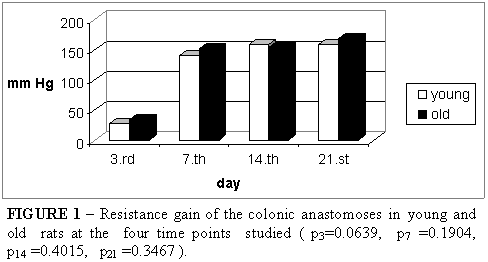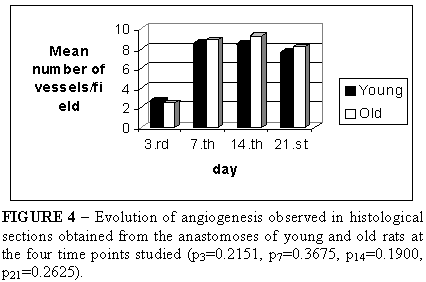PURPOSE: To evaluate the healing of the colonic anastomoses in old and young adult rats. METHODS: Fifty six Wistar rats were allocated in two groups, the young animals aged on average 110 days and the old animals aged average 762 days. Under anesthesia, the rats underwent a midline laparotomy and the colon was sectioned 2 cm above the peritoneal deflection. An end-to-end interrupted one layer colonic anastomosis was performed and the animals sacrificed on the 3rd, 7th, 14th and 21st postoperative days. A 4 cm segment of colon containing the anastomosis was submitted to bursting pressure tests. The paraffin-embedded tissue blocs were sectioned and stained with haematoxylin and eosin and Sirius Red. Histochemical methods such as PCNA, LCA and CD34 were also used. RESULTS: The colonic anastomosis resistance was greater in the old rats group on the 3rd postoperative day (p=0,0000). Collagen concentration was higher in the anastomosis of the young animals on the 14th and 21st postoperative days (p=0,0475, p=0,0346 respectively), with a significantly greater concentration of collagen type I. The concentration of collagen type III, the epithelial lining rate and the angiogenesis were similar in the study groups. CONCLUSION: Despite some differences between the two groups regarding the healing process and considering that failures in the colonic anastomosis wound healing could not be demonstrated, we can concluded that aging itself does not interfere in the wound healing process.
Colon; Wound healing; Aging





